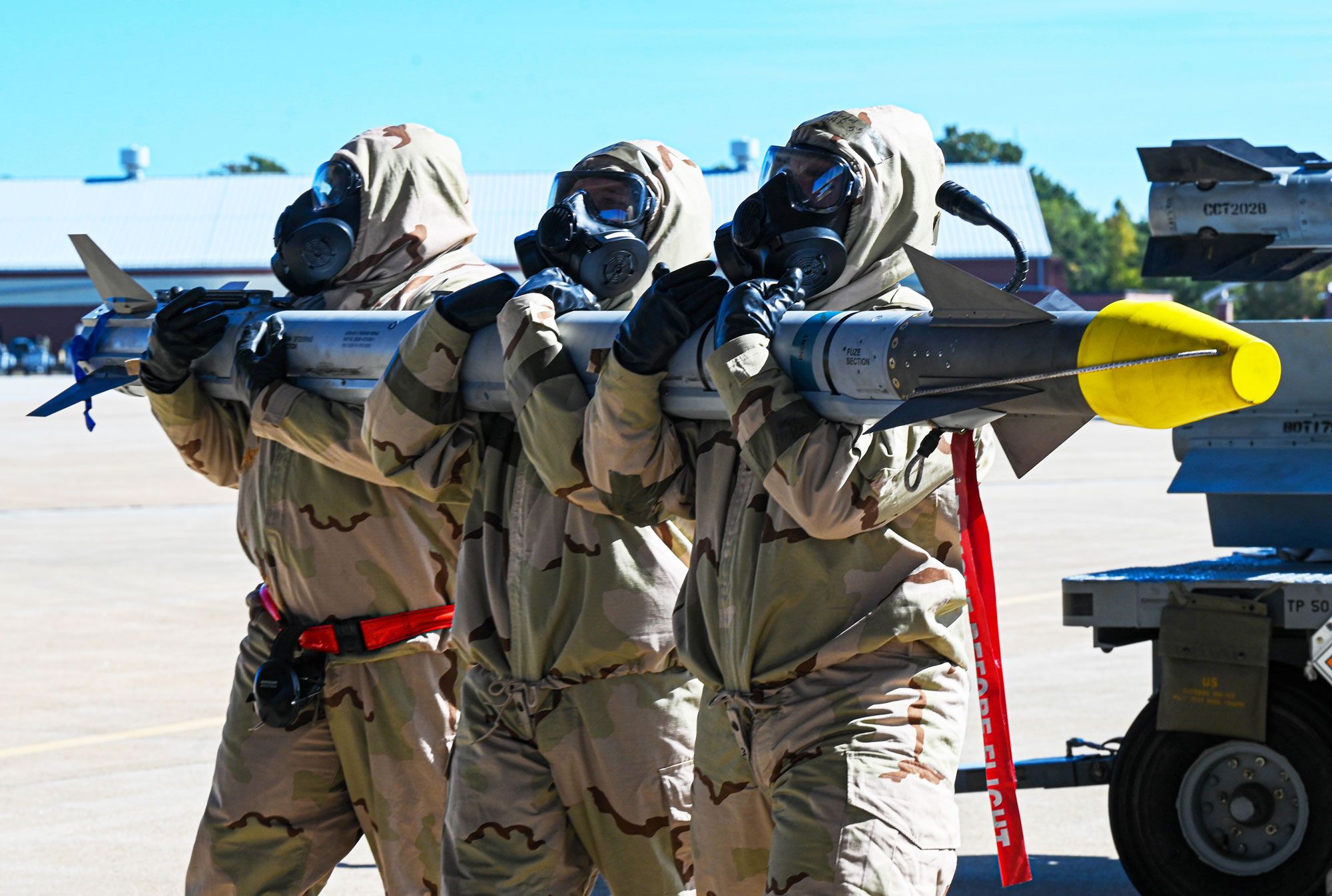America's Updated Nuclear Arsenal Compared to China, Russia
A Swedish think tank on Monday reported that the number of nuclear warheads in the world that are in "military stockpiles for potential use" has increased in the past year.
In its annual assessment, the Stockholm International Peace Research Institute (SIPRI) said that useable nuclear warheads in military stockpiles increased worldwide in 2022. Despite efforts by world leaders over the years to decrease the number of nuclear weapons, there were 12,512 warheads in global stockpiles as of January 2023, according to SIPRI.
Of those 12,512 nuclear warheads, an estimated 9,576 were available for potential use, which represents an increase of 86 warheads since January 2022.
While other countries host nuclear weapons, the nine nations identified by SIPRI as being nuclear powers were listed as the United States, Russia, the United Kingdom, China, France, India, Israel, North Korea and Pakistan.
Members of the U.S. Air Force carry a missile in preparation to load an F-22 at Joint Base Langley-Eustis, Virginia, on October 11, 2022. The United States is among the countries with the largest nuclear arsenals, according to a new report. Airman 1st Class Mikaela Smith/U.S. Air Force
SIPRI reported that of those nine nuclear-armed nations in the world, the U.S. and Russia possess nearly 90 percent of all nuclear weapons. The think tank added that useable warheads in those two countries arsenals "remained relatively stable in 2022, although transparency regarding nuclear forces declined in both countries in the wake of Russia's invasion of Ukraine in February 2022."
In February, Russian President Vladimir Putin withdrew his country's participation in the New START treaty, which was the last remaining nuclear arms control pact between Moscow and Washington. The treaty allowed the two nations to inspect each other's weapons sites, and Putin's suspension of the treaty resulted in an international outcry.
While America's total stockpile was thought to be at around the same 3,708 figure as the prior year, Russia's nuclear warhead arsenal was found to have grown from 4,477 to 4,489.
The U.S. has increased the number of its deployed warheads, though—from 1,744 in 2022 to 1,770. Russia also upped its deployed warheads to 1,674 units from 1,588.
Of the usable warheads in the world, "an estimated 3,844 warheads were deployed with missiles and aircraft, and around 2,000—nearly all of which belonged to Russia or the U.S.A.—were kept in a state of high operational alert, meaning that they were fitted to missiles or held at airbases hosting nuclear bombers," SIPRI wrote.
Despite Russia's incremental warhead increase, SIPRI noted with more concern that China's nuclear arsenal grew more substantially at roughly 17 percent.
'This is not the first year the useable stockpile is increasing," SIPRI Associate Senior Fellow Hans Kristensen of SIPRI's Weapons of Mass Destruction Programme told Newsweek. "That trend has been underway for a couple of years, but it is continuing and appears to be intensifying because of the combined effects of China, Russia, India, Pakistan and North Korea."
Kristensen added, "The most significant contribution last year was the Chinese buildup."
SIPRI estimated China's nuclear arsenal increased from 350 warheads in January 2022 to 410 in January 2023. The group also said China is expected to keep growing that arsenal.
"Depending on how it decides to structure its forces, China could potentially have at least as many intercontinental ballistic missiles (ICBMs) as either the USA or Russia by the turn of the decade," SIPRI's press release said.
SIPRI's press release included a statement from Dan Smith, the organization's director.
"We are drifting into one of the most dangerous periods in human history," Smith said. "It is imperative that the world's governments find ways to cooperate in order to calm geopolitical tensions, slow arms races and deal with the worsening consequences of environmental breakdown and rising world hunger."
Source: Newsweek


